Text

"Arms are so difficult to draw"...
While the Duke and Duchess of York (the future King George V and Queen Mary) were away on a royal tour in 1901, King Edward VII and Queen Alexandra commissioned an artist, Mrs. Gertrude Massey, to paint miniature portraits of their children, David, Bertie, Mary and Harry, as surprise gifts for them on their return. Mrs. Massey spent a lot of time with the children and got to know them well, and they became very fond of her.
In her memoir, Kings, Commoners and Me (1934), Massey described each of the children. She saw Prince Edward (David) as the "the most interesting" and Princess Mary as "the most mischievous".
As for little Bertie, she related a story of how one day he asked if he could draw her, "for a change", and she obliged him. As he drew, she observed "His face was so expressive, one could almost read his thoughts." His expression showed that he was pleased with his drawing, except for one thing.
"Would you mind if I don't give you any arms?'' he asked. "Arms are so difficult to draw."
Aw, Bertie!!! <3
I enjoy reading about these little moments throughout his life when Bertie's creative side would shyly show itself. I think he did have a creativity about him; he just didn't really get a lot of opportunity to explore it. Although he was never interested in fine arts and culture the way his younger brother the Duke of Kent was, I think he enjoyed designing and creating and was proud of these accomplishments in his humble way.
For instance, he loved landscape gardening, (once he wrote a letter in the "language of Rhododendrum"!). He did needlepoint, and created a set of 12 chair covers for Royal Lodge. He also designed the George Cross and George Medal himself. And of course there was his life long interest in photography and filming, which I can particularly relate to and understand. Even during his last Sandringham Christmas, King George designed trousers to be worn with the Order of the Garter robes instead of the traditional knee pants and Prince Philip photographed him wearing them. It has been repeated often that when he got interested in something, he was all in! That is the essence of a creative spirit, in my eyes.
What a sweet, sensitive soul.
Sources: Kings, Commoners and Me (1934) by Gertrude Massey; George and Elizabeth, A Royal Marriage (1983) by David Duff; Bonhams; The Royal Collection Trust
26 notes
·
View notes
Text

ABOVE: The Daily Mirror - October 19, 1938
ROYAL VISIT TO CHILDREN'S HOSPITAL (British Pathé)
King George VI and Queen Elizabeth visit the new children’s hospital at Great Ormond Street, London. (Oct. 18, 1938)
74 notes
·
View notes
Text
Today marks 70 years since Queen Elizabeth II acceded to the throne, following the death of her father, King George VI.
This is the first footage we have of Elizabeth as Queen, taken by Philip.
Forever wondering what he said to her behind the camera to make her smile like that in such moment❤️🩹
374 notes
·
View notes
Photo


”[..] but I feel I must tell you that I have always cared for you & had the hope that you would one day care for me. Things were difficult for both of us weren’t they from the start, & I understand from your letter that you want me to forget it. I have no other alternative I am afraid so I will try.” - Duke of York to Lady Elizabeth Bowes-Lyon, letter dated 16 March 1922
118 notes
·
View notes
Photo








Heirs and spares announcing engagements, 1923 to 2017.
4K notes
·
View notes
Text
King George VI, Queen Elizabeth, Princess Elizabeth, and Princess Margaret on the grounds of Windsor
202 notes
·
View notes
Text
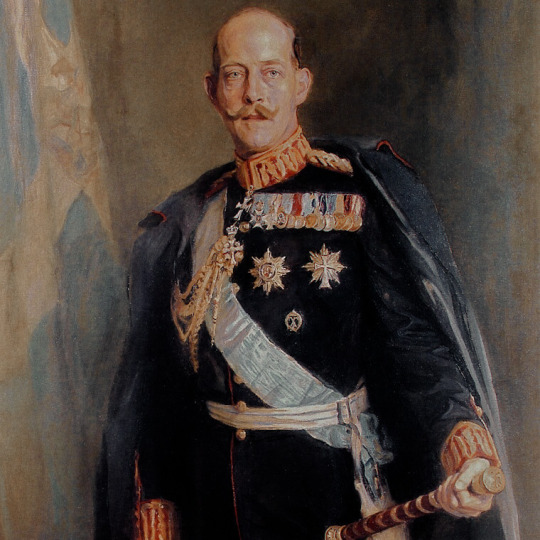

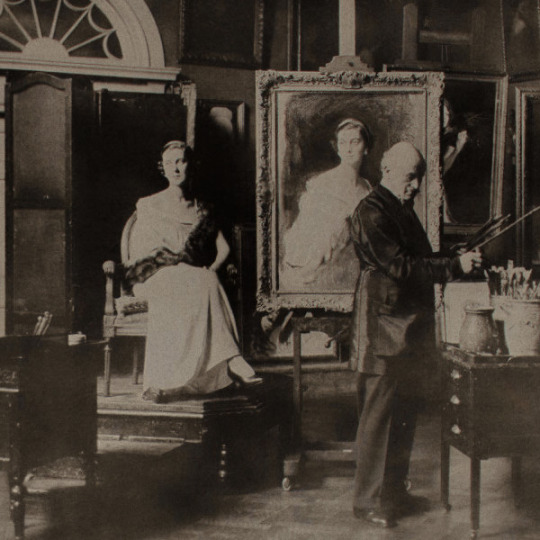

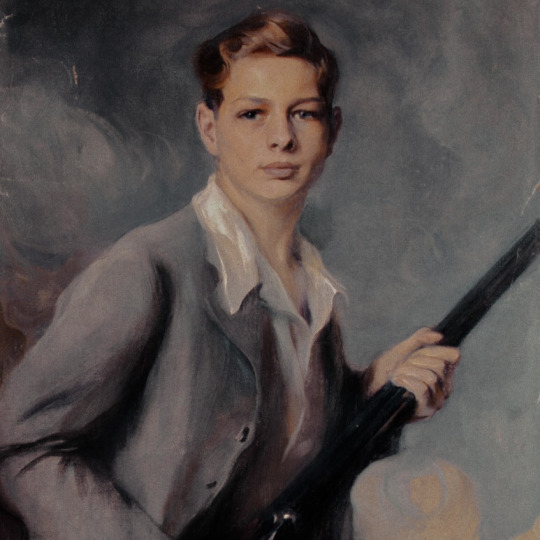
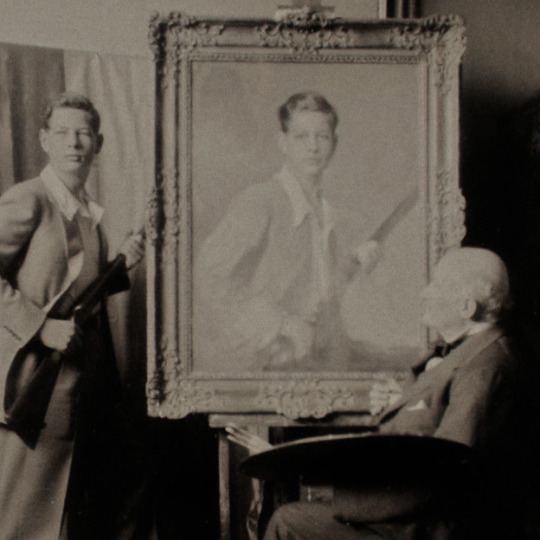


Various royals sitting for their portraits, painted by Philip de László, early 20th century.
“I am an artist of the world and paint history, not only individuals.” — Philip de László
202 notes
·
View notes
Text
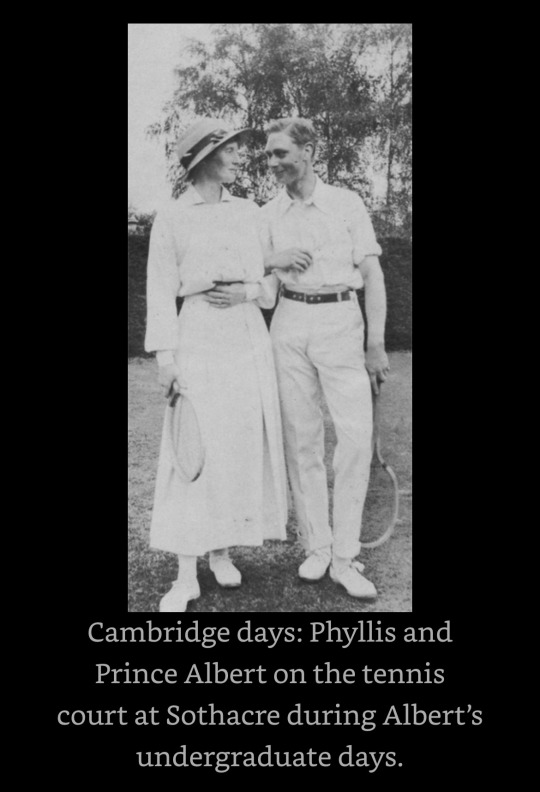
“Albert enjoyed having a second family life. He grew very attached to Phyllis, or Phiggie, as he called her, and would wander into the woods and fields when at Sandringham for the weekend to find jay feathers to send to her, sometimes writing two or three times in a single day. Phyllis provided some welcome maternal affection, while Louis was always the father figure urging Albert on, pushing him to have fun, to test himself and to embrace the opportunities before him. And Albert did gain confidence.”
- from The King Maker: The Man Who Saved George VI by Geordi Greig
Just my extra two cents: while I really enjoyed this book and its insights into the royal family (some of the Queen Mary stuff is great), I do sometimes feel that Louis Greig is given too much credit for Albert’s personal development. The success of their relationship was not owed to Louis alone - it was also because of Albert’s character; he was willing to listen and he worked very hard on himself. Almost too much so! He did credit Louis with "saving his life" (it was Greig who convinced George V to let his son have surgery for the ulcer that debilitated him for three years) but I think he was way too modest in that way; he always wanted to credit others for his own successes. But that's just my own opinion. No doubt, the relationship between Louis and Albert was an important one and Greig was the right man for the job.
And I just love the sweetness of this photo of Bertie & Phiggie! 🥰🤗🪶🎾
16 notes
·
View notes
Photo
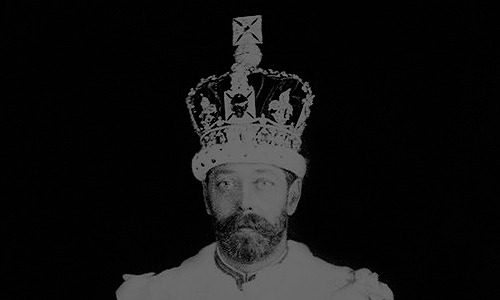

23 January 1936 | King George V’s funeral cortege passes through London on its way to Westminster Abbey. During the procession, part of the Imperial State Crown, which sat atop the King’s coffin, fell off. Some footage of the funeral procession shows the crown without the Maltese cross and orb.
As [the coffin] passed through streets packed to capacity with silent crowds, the Maltese cross - set with a sapphire said to have belonged to Edward the Confessor, eight medium-sized diamonds and 192 smaller diamonds - inexplicably fell from its place at the very top of the [Imperial State] Crown. Having caught a ‘flash of light dancing along pavement’, the new King’s [Edward VIII] instinct was to pick it up until, as he wrote, ‘a sense of dignity restrained me.’
‘Fortunately,’ he went on, ‘the Company Sergeant-Major bringing up the rear of the two files of Grenadiers… had also seen the accident. Quick as a flash, with scarcely a missed step, he… scooped up the cross with his hand, and dropped it into his pocket. It seemed’, said the King, ‘a strange thing to happen; and, although not superstitious, I wondered whether it was a bad omen.’
George V’s eldest son, King Edward VIII, abdicated on 11 December 1936, less than a year after inheriting the throne on 20th January, in order to marry his long-term mistress Mrs. Wallis Simpson, in an ordeal dubbed the ‘abdication crisis’. Wallis was, by then, a twice-divorced woman and as monarch Edward was the Supreme Governor of the Church of England, which disapproved of the remarriage of a divorced person if the former spouse was still alive. Rather than remain King without Wallis by his side, or marry her against the wishes of his ministers and cause a constitutional crisis, Edward chose to abdicate and was succeeded by his brother, King George VI - father of the current Queen Elizabeth II. Before his death, King George V is quoted to have said that David, as Edward was known by family and friends, would ‘ruin himself within a year’.
168 notes
·
View notes
Photo
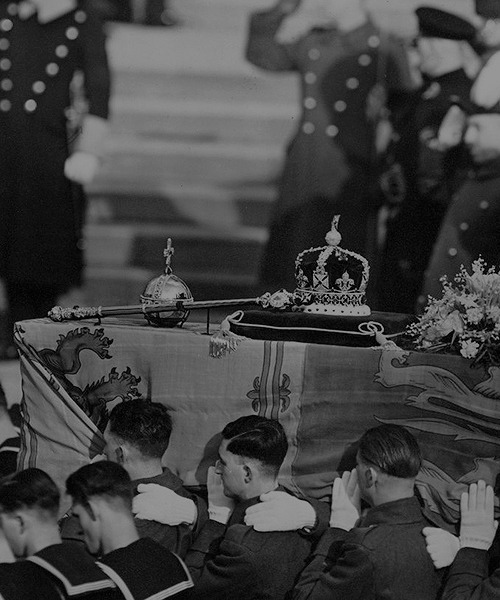
The death of King George VI, on 6 February, 1952, brought to a close a life unsurpassed during the last thousand years of English history for quiet heroism and selfless devotion to the royal duties laid upon him. […] At the news of his passing there was sorrow everywhere for the loss, not only of a king, but of a brother; for in a quiet unique degree King George was at one with his people. No exceptional brilliance set him apart; while the happiness of his family life, the unaffected sincerity of his Christian faith, the friendliness and ready sympathy he showed to everyone, regardless of class or wealth, kindled in them a feeling of intimate fellowship. He was no remote potentate, but their brother King. And while they mourn, they thank God at every remembrance - Malcolm Thomson, The Life and Times of King George VI, 1895-1952.
291 notes
·
View notes









